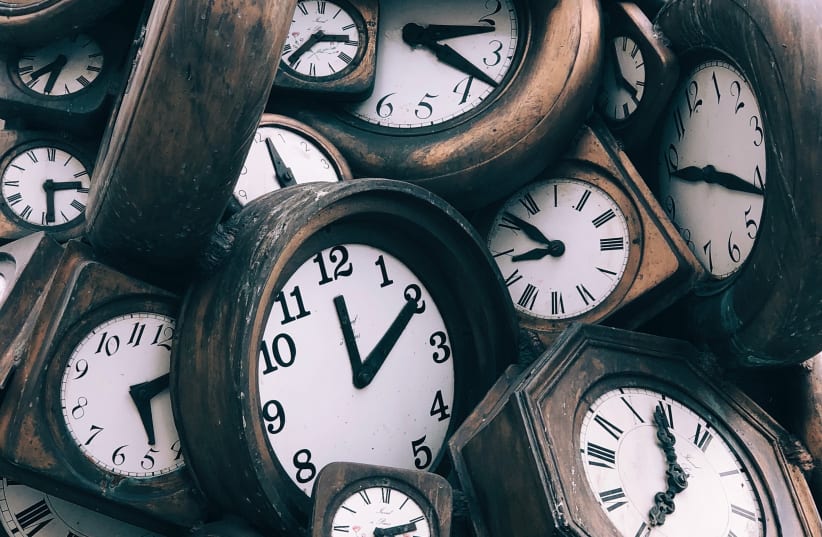Time can do tricks. Many of us experienced the illusion that those long summers during childhood felt so much longer than the same three months feel like now as an adult. Many of us experienced the illusion that those long summers during childhood felt so much longer than the same three months feel like now as an adult.
While one can argue why one summer may appear longer than the other and how the perception of time can compress and dilate durations depending on various factors, one can easily set up an experiment to gain more insights.
Researchers at Hungary’s Eötvös Loránd University, which claims to be the world’s oldest university operating since its foundation in 1635, based their work on the concept of heuristics – introduced in cognitive science by Israeli-American psychologists Prof. Amos Tversky and Prof. Daniel Kahneman. Six years after Tversky’s death in 1996, Kahneman received the 2002 Nobel Memorial Prize in Economic Sciences for the work he did in collaboration with Twersky (the prize is not awarded posthumously.)
The Hungarian researchers have just published their paper in the journal Scientific Reports under the title “Children and adults rely on different heuristics for estimation of durations.”
What are heuristics?
Heuristics are mental shortcuts or proxies that enable people to make quick decisions. To understand why heuristics are needed for comparing durations, one must look at what else we can rely on. Since the brain has neither a reliable central clock nor a direct sensory mapping of durations, unlike distances or pitch, we must use a proxy. A proxy to “duration” is something concrete yet related to the time content, like “About which one can I talk more?”
The researchers just did that. They asked how eventfulness affects our duration estimates when probing at different milestones during our cognitive development. They set aside three age groups, four to five, nine to 10 and 18 years and older and made them watch two one-minute videos
One video consisted of a rapid succession of events (a policeman rescuing animals and arresting a thief), and the other was a monotonous and repetitive sequence (six shady prisoners escaping on a rowing boat). The two videos were extracted from a popular animated series and balanced in visual and acoustic features, except for one feature: eventfulness. If a first video was packed with actions, they could tell a lot about it, thinks the five-year-old, while the other movie could be summarized with a single verb, such as “rowing.”
The researchers played the two clips in a balanced order of 50%, watching the eventful first. After watching both videos, they asked only two questions: “Which one was longer?” and “Can you show the durations with your arms?” These are easy-to-understand questions even for a four-year-old.
Do children and adults see time differently?
The results showed a strong bias in each age group, but for pre-kindergarteners, surprisingly, in the opposite direction. While more than two-thirds of pre-kindergarteners perceived the eventful video as longer, three-fourths of the adult group felt the same about the uneventful video. The middle group expressed a similar but more moderate bias than the adult. By the inclusion of the middle group (nine- to 10-year-olds), the turning point could be estimated around the age of seven. Regarding the arm-spread orientation and distance, there was an increasing trend of using horizontal arm spreading with age. While pre-kindergarten-age kids used 50%-50% vertical and horizontal gestures by school age; that ratio changed to 80% to 90% in favor of horizontal arm expressions.
The result is unexpected because none of the biological models of time perception could have predicted it. Biological models of time perception fall under two categories: pacemaker-like neurons in the brain and neurons that display a declining firing rate with time. Still, “who” would interpret those signals in the brain remains elusive. Both model classes assume a continuous age-dependent improvement with age, but this is not what the researchers found. Instead, what they found was a switch of perceived duration ratios between the youngest and the two older groups, with a turning point at seven.
The eventful video consisted of three episodes, a perfect example of a story. The uneventful video, in contrast, had no episodes and no storyline. In terms of heuristics, the difference can be captured by representativeness heuristics. The eventful video had more representative story examples than the uneventful one. Therefore, relying on a representativeness heuristic, the kindergarteners would feel the eventful video was longer/
At around the age of six to 10, kids learn the concept of “absolute time.” We all rely on the concept of absolute and universal time when we make appointments, organize our tasks and follow timelines. All these actions reinforce the concept of universal time that is independent of the observer. We become aware that our subjective experience of time as observers may change or be a subject of illusions. The best we can do to eliminate subjectivity is to check the flow of time.
We can check the flow of time by frequently sampling it. Looking at the clocks or just staring out the window and watching the traffic flow. The more often we check, the more reliable the estimate we get, but our brain is not always available for tracking time. When our attention is occupied with another task, then this sampling of the absolute time may skip cycles. In contrast, when waiting for somebody who is late for an appointment, time slows down as the brain counts the seconds while impatience and irritation increase.
When watching a captivating movie, the mind is completely immersed in the story because the sequence of actions unfolds so fast that one does not have time to think about anything else, such as life, work or a to-do list. Instead, the mind is hijacked by the alternative reality of the movie plot. In contrast, when watching a boring movie, one is going to check the watch or think about where else one could be at that time, and all these distractions enable us to sample the flow of absolute time. So the two types of heuristics explain the bizarre switch at about age seven and the persistent bias that the boring meetings appear longer than they are, which stays with us for the rest of our life.

